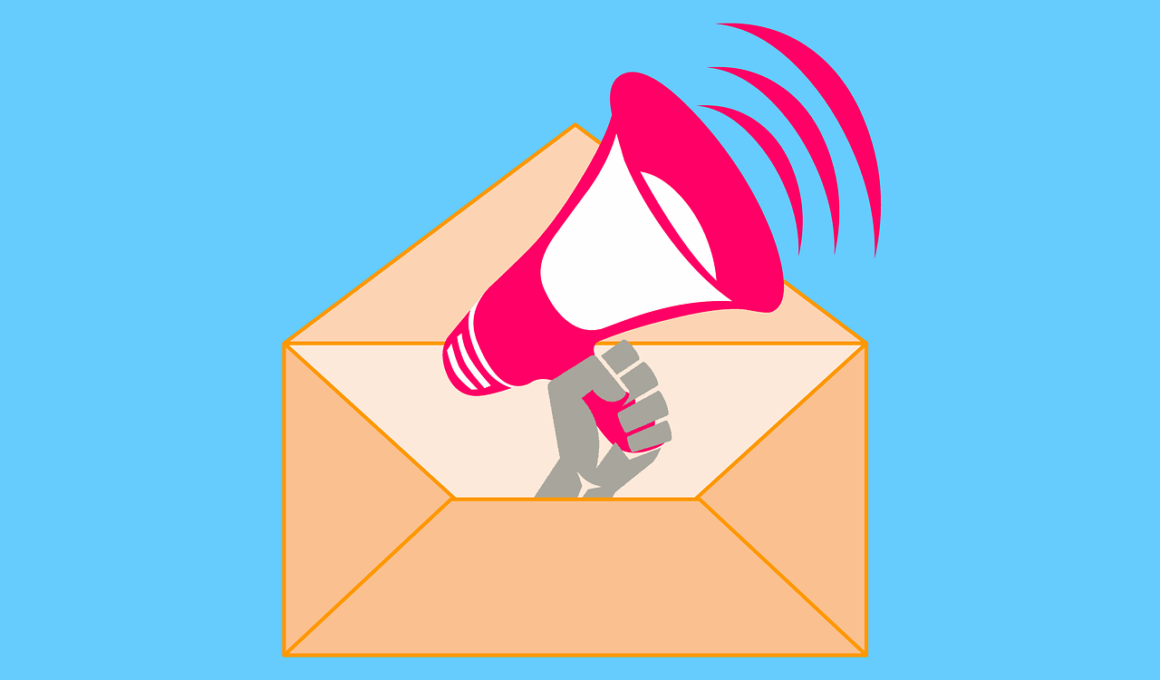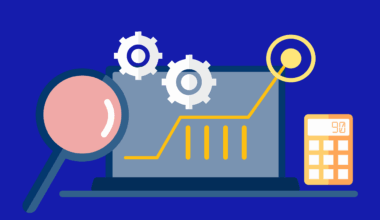Timing Your Emails Using Behavioral Triggers for Maximum Impact
Email marketing is an essential strategy for businesses aiming to connect effectively with their audience. One of the most powerful methods in this realm is leveraging behavioral triggers. Behavioral triggers refer to actions taken by users that can be used to send tailored email communications. For example, when a customer abandons a cart, a timely email reminder can prompt them to return and complete their purchase. This method not only increases the likelihood of conversion but also enhances the customer experience. Another common trigger is user engagement with previous emails, which can help tailor future communications based on past interactions. By sending emails triggered by specific actions, such as browsing history or previous purchases, marketers can create more relevant messaging. Personalized content leads to higher open and click rates, resulting in improved conversion metrics. Additionally, these triggers can help in segmenting audiences effectively. When customers receive messages based on their behavior, it fosters a sense of understanding and attentiveness from the brand. The next step is understanding how to implement these triggers in your email marketing strategy effectively.
Identifying Key Behavioral Triggers
Identifying key behavioral triggers is crucial for optimizing your email marketing strategy. Start by analyzing customer data to determine which user actions are most indicative of future purchases. Common triggers include cart abandonment, product page views, and browsing history. For instance, if a user spends significant time on a specific product page but fails to purchase, sending a follow-up email featuring that product may influence their decision. Additionally, email engagement metrics provide valuable insights. If a customer consistently opens and clicks certain types of emails, it reflects their preferences and interests. Tailoring communications in response to such behaviors can significantly enhance engagement levels. Another approach is to look for inflection points in user journeys, such as first-time visitors versus loyal customers. First-time visitors may benefit from welcome emails, while loyal customers might appreciate exclusive offers or loyalty rewards. By differentiating these groups, businesses can maximize the effectiveness of their email campaigns. Furthermore, regularly reviewing and updating your triggers ensures that your strategy remains aligned with evolving customer behaviors and preferences, which can lead to better retention rates.
Next, let’s dive into the timing aspect of sending emails based on behavioral triggers. Timing plays a pivotal role in ensuring that your emails have the maximum impact. For instance, sending a cart abandonment email should be timely, ideally within an hour after the user leaves items in their cart. Research suggests that emails sent within that window have significantly higher open rates and conversion chances. Moreover, consider the time zone and schedule of your customers when sending these emails. An email sent at a time when users are likely to check their inbox will increase its visibility and likelihood of interaction. Additionally, analyzing the historical data of when your audience engages the most can help refine your timing strategies further. Another key timing consideration is the frequency of follow-up emails. Avoid overwhelming customers with too many reminders, as this can lead to frustration. Instead, calibrate your follow-ups based on customer interactions following the initial email. By strategically timing your emails, you not only enhance customer experience but also increase the chances of achieving your marketing goals.
Creating Compelling Content for Triggered Emails
Compelling content tailored to your audience is essential for effective triggered emails. Once you’ve established the timing and the triggers, focus on delivering engaging and personalized content. Begin with a catchy subject line that speaks directly to the triggered action. For example, a subject line such as, “Did You Forget Something? Your Cart Awaits!” can entice users to revisit. Follow this up with a concise message that reiterates the value of the abandoned items, showcasing their benefits and relevance to the user. Using visually appealing images of the products can reinforce the message. Adding testimonials or reviews can further strengthen credibility and entice the recipient to act. Another effective strategy is to include a clear call-to-action (CTA), guiding the customer on what to do next. Whether it’s a button to return to their cart or a limited-time offer, the CTA should stand out and create urgency. Segmenting your email list based on previous behavior allows for even more tailored messaging. Overall, the content must resonate with the audience, driving them to take action that aligns with your objectives.
Furthermore, automating your triggered email campaigns can save time and improve efficiency. Email marketing platforms offer automation tools designed to send emails based on specific triggers without manual intervention. Setting up these automated workflows ensures timely delivery of messages tailored to user behaviors. For instance, once a user abandons their cart, a pre-set sequence of emails can guide them back, offering reminders and potential incentives to seal the deal. Additionally, automations allow for comprehensive tracking and testing of various email elements, enhancing future campaigns. Marketers can analyze performance metrics such as open rates, click-through rates, and conversions to refine messaging and strategies continuously. Testing different subject lines, email designs, and send times can also provide valuable insights. Learning from the success and failures of triggered emails assists marketers in optimizing content and delivery methods. Remember to keep exploring new automation features as technology evolves. As email marketing continues to grow, staying ahead of trends and best practices will ensure your strategy remains effective, relevant, and capable of achieving desired outcomes consistently.
Analyzing Performance Metrics
Analyzing performance metrics of your triggered email campaigns is a vital step in evaluating their effectiveness. Metrics such as open rates, click-through rates, conversion rates, and unsubscribe rates provide essential insights into user engagement and content resonance. Start by measuring open rates to assess how well your subject lines perform. If open rates are low, reconsider the wording and personalization elements incorporated. Next, examine click-through rates, which reveal how many recipients took action after opening your email. This metric indicates whether your content and CTA are compelling enough to prompt further engagement. Furthermore, analyzing conversion rates will showcase the ultimate effectiveness of your emails, reflecting how many users completed the desired action, such as making a purchase. If conversion rates are underwhelming, consider A/B testing different content variations to find what resonates best with your audience. Don’t overlook the unsubscribe rates, as high numbers can signal issues with frequency or content relevance. Regularly monitoring these metrics guides future strategies, helping refine your approach and optimize results in your email campaigns over time.
Endeavoring to enhance triggered email campaigns can maximize their effectiveness for your business. It’s vital to maintain an ongoing cycle of feedback and improvement. Engaging with your audience through surveys or feedback forms following a triggered email can provide direct insights into their feelings about the email content and timing. Understanding customer perceptions helps refine future strategies to ensure satisfaction and loyalty. Additionally, keeping abreast of industry trends and benchmark performance is crucial. As trends evolve, adaption is necessary to ensure your email marketing remains competitive and effective. Consider attending webinars, reading industry blogs, or participating in forums to stay informed. Furthermore, collaborations with professionals in the field can provide unique insights and innovative ideas to implement in your campaigns. Emphasizing creativity and personalization will resonate strongly with recipients, keeping your brand top-of-mind. Ultimately, the key to successful email marketing lies in understanding your audience’s needs and continuously adapting to their behavior. With a strategic approach to timing, content, and analysis, you can harness the potential of behavioral triggers, driving better engagement and conversion rates in your email marketing efforts.
In conclusion, mastering the art of timing emails using behavioral triggers is a powerful way to enhance your email marketing success. With the right techniques, you can reach out to customers at the moments that matter most, while ensuring that your message is relevant and impactful. By identifying key behavioral triggers and creating a robust strategy around them, you set the stage for improved engagement, customer satisfaction, and ultimately, conversions. Additionally, investing in automation and analytics will further streamline your process while allowing you to gather crucial data, necessary for refining your email strategies. Adapting to changing customer behaviors and preferences is vital to sustaining long-term relationships and maintaining relevance in a competitive landscape. Remember to continuously experiment with different techniques, content approaches, and timing to discover what resonates best with your audience. Staying proactive, you can refine your email marketing strategy to ensure it evolves alongside your customers’ needs. Make email marketing a pivotal aspect of your overall strategy, focusing on timing, relevance, automation, and continuous optimization to reap the benefits of behavioral triggers fully.


